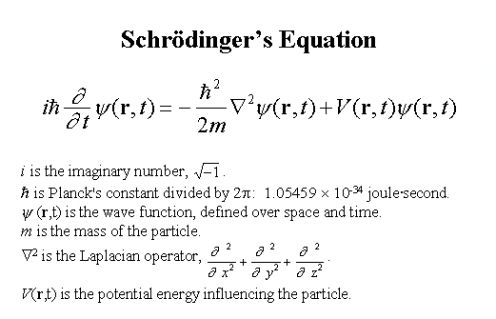What is a wavefunction?
1 Answer
A description of a particle in a quantum mechanical system that also satisfies a formula known as the Schrodinger Wave Equation.
Explanation:
The wavefunction is depicted as
The Schrodinger Equation that it satisfies is as follows:

This is pretty self-explanatory. As you see, it uses differential calculus and derivatives. See the upside-down triangle? That's a differential operator, as in, it is something that differentiates a function, in this case,
It can be noted that typically, the wavefunction has a form like:
v is the velocity of the wave, or particle, because wave-particle duality and that jazz, I think.
Also, one last thing:
This is known as normalization. Why does this make sense? Because there's a 100% chance of the particle being at any point on the interval
Finally, something interesting.
Basically, given any two wavefunctions, you can add them together to get a third wavefunction. This is known as the Principle of Superposition.

